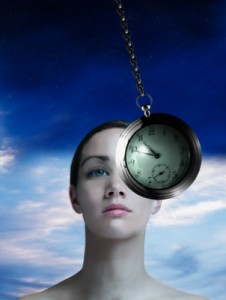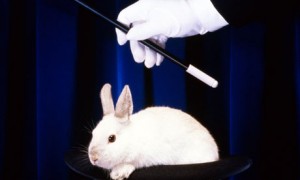Over the previous week I attended the annual conference for the Association for the Scientific Study of Consciousness (ASSC), which last year was based at the exotic location of Kyoto in Japan, but this time was hosted by my own department in Brighton, in the UK. Academic conferences are an intense week that I always look forward to. The social aspect for me is the highlight: To make up for long absences, we usually take advantage of every lunch, dinner, and post-dinner pub hours, in large groups. Here I can catch up with old friends from around the world, or easily make new friends. But the social bustle can sometimes be a little unwieldy: I felt somewhat sorry for one Italian Restaurant manager during the first night when about 50 of us, in three connected groups, descended on his establishment at 9:30, all hoping to be fed before closing time.
The other aspect of conferences that I can’t wait for is the feeling that I’m swimming on the crest of the research wave, with many talks and academic posters presenting data that hasn’t yet been published – with mine amongst them, as I share my own ideas or experiments. I love discovering these new pieces of the puzzle, and also love the discussions – sometimes rather heated – that are a product of this sharing of information. It’s a rather frenetic time, with around 20 talks to hear during a long day, along with perhaps 100 relevant posters to visit, but as long as the coffee keeps flowing freely, it’s manageable.
This conference there seemed more than the usual crop of new clues about the science of consciousness, and I thought you might like to hear about a few of the highlights.
The first surprise was during a pair of workshops at the start of the conference. I decided to opt for the hypnosis workshop to begin the conference on the Monday morning last week. Hypnosis appears to have a rather tangential relationship to consciousness research, but increasingly scientists are discovering that these apparent cul de sacs of psychology can offer up important central ideas about what consciousness is and what it’s for.
 Hypnosis is primarily viewed as a form of therapy or a rather dubious type of public entertainment, but this altered state of mind can also be both a tool of science and an intriguing field on its own. The speaker, Devin Terhune, began by dispelling the myths surrounding hypnosis – for instance, you can’t be hypnotized against your will, or do something that you would normally find repugnant, but you can lie during hypnosis.
Hypnosis is primarily viewed as a form of therapy or a rather dubious type of public entertainment, but this altered state of mind can also be both a tool of science and an intriguing field on its own. The speaker, Devin Terhune, began by dispelling the myths surrounding hypnosis – for instance, you can’t be hypnotized against your will, or do something that you would normally find repugnant, but you can lie during hypnosis.
However, hypnosis is still a powerful technique. For instance, people can be given hypnotic suggestions to simulate psychiatric or neurological conditions (during the hour following hypnosis, at least). You can hypnotize people to develop many of the symptoms of sufferers of obsessive compulsive disorder, thus becoming temporarily obsessed by cleanliness and repeated hygiene behaviors. You can induce certain delusions, such as of a person failing to recognize themselves in the mirror anymore. You can even, possibly, induce an out of body experience using hypnosis. One important neurological condition closely connected with consciousness research is hemispatial neglect, where, following brain damage (especially when caused by a stroke), the patient fails to attend to the entire left half of space, and may only shave on the right, eat from the right half of his plate and so on. This, too, can be induced for a time by hypnosis. All these temporary syndromes can be studied using neuroimaging, thus revealing insights about the brain networks responsible for these symptoms.
Hypnosis can also induce variants of synesthesia, where a person sees black letters or numbers as if they had color attached.
It can also act as a useful tool to manipulate performance on standard psychological tests. For instance, it can make us better at random number generation. And there is a famous psychology experiment called the Stroop test, where you typically have to read out a colored word. If the word is “red”, say, and it is colored blue, you are slower to say it than if it were colored in red. This robust effect is, surprisingly, highly curtailed following hypnotic suggestions.
Although it’s still far from clear exactly how hypnosis works, there is a clear consensus that it reduces activity in the prefrontal cortex, parietal cortex, and cuts down on chatter between these two regions as well. Given that consciousness is most closely linked with this network or regions, one could speculate that hypnosis is related to a certain kind of lowering of consciousness, so that we’re more amenable to external suggestion.
 During the afternoon I attended an equally tangential workshop, this time on the science of magic, by Gustav Kuhn and Ronald Rensink. One would think that magic, with its serious need for secrecy, and science, with the sharing of knowledge, would not make a good mix. But again this is increasingly proving not to be the case, and tricks that magicians use everyday to extract extreme results from the audience can teach psychologists a lot about the mind. For instance, the power of expectation, of what we assume is about to happen, is a key factor in most magic tricks, but it also dictates the style of tricks. Because we expect balls not just to disappear, but to reappear eventually, magicians always round off their tricks by relieving our suspense in this way.
During the afternoon I attended an equally tangential workshop, this time on the science of magic, by Gustav Kuhn and Ronald Rensink. One would think that magic, with its serious need for secrecy, and science, with the sharing of knowledge, would not make a good mix. But again this is increasingly proving not to be the case, and tricks that magicians use everyday to extract extreme results from the audience can teach psychologists a lot about the mind. For instance, the power of expectation, of what we assume is about to happen, is a key factor in most magic tricks, but it also dictates the style of tricks. Because we expect balls not just to disappear, but to reappear eventually, magicians always round off their tricks by relieving our suspense in this way.
And studying how magic is so effective at diverting our attention away from the main part of the trick clearly shows what grabs our attention most of all. Social cues win here – the direction of gaze and questions asked at us are features of our world we almost can’t help but fixate our attention on. Humor, too, is perfect at disarming us and causing our attention to centre on the joke-teller, and away from the trick. The science of magic is even revealing details about psychiatric disorders. For instance, you might suspect that autistics, who tend not to focus so much on social cues, are somewhat protected from believing in illusions. Actually, the opposite is the case, and autistic people tend to fixate even more on faces than others during such illusions, and are more easily fooled. Exactly why this is the case is still a mystery.
So somewhat esoteric scientific subjects like hypnosis and magic tricks are actually becoming powerful tools in helping us explain psychology, neuroscience and consciousness. And this was just the first day! Over the coming days I’ll add further articles to explain what else I learnt at the science of consciousness conference. The next article will describe the cutting edge research that shows how the fading of consciousness, for instance by anesthesia, involves a complex interplay of different brain waves.

